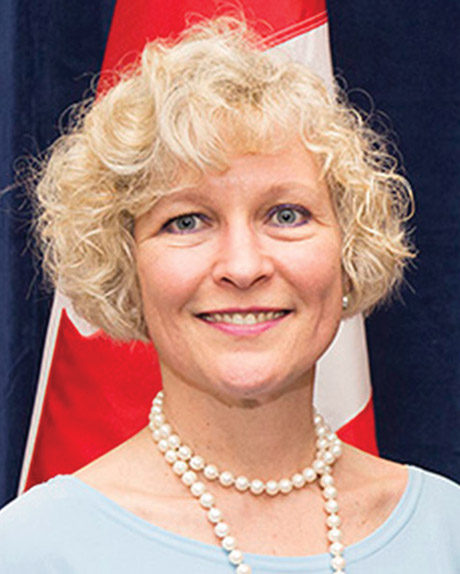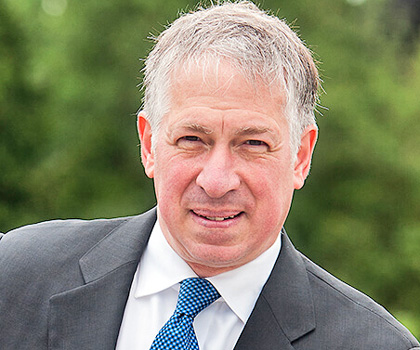In the News
Work Permit

For many international students coming to Canada, their goal is to obtain a Post Graduate Work Permit with a view to qualifying for permanent residence under Express Entry.
Yet many students, especially those who are younger and without any foreign post-secondary education or foreign work experience, may find it challenging to score enough Comprehensive Ranking Score (CRS) points to receive an Invitation to Apply (ITA) under Express Entry - even after working in Canada for several years.
While the Post Graduate Work (PGWP) permit provides an excellent opportunity to obtain Canadian work experience, you can only ever obtain one PGWP work permit.
So before you apply for the PGWP, you need to consider how many CRS points you will likely score in the Express Entry program, and if necessary, develop an alternative strategy to be able to garner an ITA for permanent residence to Canada.
Consider the factors that lead to the highest CRS scores - a combination of both foreign and Canadian education AND foreign and Canadian work experience.
For many young people, it may be advisable to postpone coming to Canada to study until you first obtain a foreign degree and a year or two of foreign work experience in a skilled position that meets the criteria of a National Occupational Classification (NOC) occupation at level O, A or B.
(If you don’t know what this means, then you need to do your homework before applying to study in Canada). Please refer to our recent blog post: When should I study in Canada? - Considerations for an International Student, posted September 10, 2018 (http://www.asianpacificpost.com/article/8387-when-should-i-study-canada....)
For those students already studying in Canada, you may defer applying for a PGWP and obtain an additional post-secondary diploma or degree.
The CRS scoring provides considerable additional points for having two or more post-secondary educational credentials - so long that one of them is at least three years or greater duration.
Without question, the greatest factor for contributing to the highest CRS score possible is language proficiency in English or French.
Obtaining an IRCC recognized language test with scores at CLB level 9 (or higher) for each of reading, writing, speaking and listening, is crucial to obtaining a CRS score that will lead to an ITA for Express Entry.
Please note, the language test that you need to get accepted into school may not be the type of test that you need for Express Entry! (Academic versus General).
It is a good idea to take a language test before you apply to study to Canada to see how much you will need to improve your language proficiency both before and after arriving in Canada.
Many prospective international students are unaware that they can only ever obtain one Post Graduate work permit in Canada. It is important to be aware of what your likely CRS point score will be before you apply for a PGWP to ensure that you will ultimately qualify for an ITA under Express Entry.
If you aren’t able to meet the Express Entry criteria, you need to develop a strategy to increase your CRS score. Use your Post Graduate work permit wisely because you will only ever get one!
as ‘cash cow’

But the Government of Canada feels that even if it did overcharge for the fees, you are not entitled to refunds.
Now, the dispute, which involves over two million people, who entered Canada between October 2009 and March 2015, is wrapped in a rare immigration class action lawsuit, the largest in Canadian legal history.
Early this month, Federal Court Justice Sean Harrington approved a motion for the parties to notify eligible litigants to join the legal action.
People coming from visa-required countries, such as China, India and the Philippines, are automatically included in the class action whether they had applied to come to visit, study or work in Canada.
Those not wanting to participate in the legal action have until November 30 to opt out of the proceeding.
In an Agreed Statement of Facts, that was kept secret until very recently, the Government has to a large extent admitted its costs to process the visas were much lesser than the $150 it charged each applicant.
Based on the government’s own numbers, the overpayment is estimated to be between $194 million and $240 million.
“Most of the people who are owed money are from China, India, Philippines, and everyone else who needed a visa to come to Canada,” said Richard Kurland, a lawyer for one of the lead plaintiffs.
“This is not tax dollars…a large number paid to come in as students and workers, and are now permanent residents and voting Canadian citizens,” Kurland told Mata Press News Service.
Kurland’s representative plaintiffs are Alan Hinton and Irene Popapova of Coquitlam, B.C.
Hinton, a software technician from Coquitlam, B.C., met his future wife Irena in Moscow in 2001 and got married the next year. Hinton paid $75, the cost at that time, to get his wife a visitor’s visa to Canada.
Kurland investigated Hinton’s application process and determined, according to court documents that “Hinton, who paid a fee of $75.00 for the determination of an application to sponsor his wife...the costs of the service was $36.69. Given this cost and the fee charges, there is a profit on the service of $38.31."
After Kurland filed a lawsuit using Hinton and his wife as representative claimants in a class action application, the government reduced the current visa processing fees from $150 to $100.
Since then other plaintiffs have joined the case.
Kurland argues that the government of Canada was using the visa fees as a ‘cash cow’ and was making illegal profits.
Under Canada’s Financial Administration Act, the federal government can make money to offset costs of its different services, but it needs Parliament’s permission.
In this case, no such permission was given, he said.
“When you pay $150 fee to process an application and when the application is processed with a visa or a refusal, you’re supposed to be done.
What they were doing was adding in costs for things that happened after you received your decision.”
The government was using the money for issues like port of entry activities associated with processing at a port of entry secondary where no document is issued, “responding to media inquiries”, “scanning our environment”, “managing public relations”, processing immigration and citizenship complaints, statistics and research, outreach, promotion and recruitment of immigration officers.
“This is where everything plus the kitchen sink was thrown into the cost,” said Kurland.
"The activities were not required, extraneous to, and separate and distinct from, the processing of multiple entry temporary resident visa applications and single entry temporary resident visa application,” he said.
The Federal Government has acknowledged this in the recently Agreed Statement of Facts but has declined to comment on the case saying it’s before the courts.
Kurland said the government’s position is that "even if it cost less than the fees collected these excess fees are not recoverable.”
“That is the precedent the government is trying to establish…if someone overpays the government for something, the government can keep the money,” he added.
To find out more about the class action suit, your eligibility to be involved or opt out, go to http://visalitigation.com/
at the border
By Victor Ing
Many international travelers are well-versed in border security and customs protocols at ports of entries. Yet many people find it stressful to be questioned by a border security officer, worrying that they may say the wrong things.
Horror stories abound about delayed or canceled trips as a result of interrogations gone wrong. Some travelers find themselves being referred for extra questioning every time they travel to Canada.
Frequently people are referred to secondary examination because they have an enforcement flag put into their electronic immigration file that causes repeated inquiries and corresponding delays. How does a traveler prepare for increased security in today’s world of international travel?
Enforcement flags are computer generated notices that cause a person to be automatically referred to a secondary examination when arriving in Canada.
Upon each new entry to Canada, the officers of the Canada Border Services Agency (CBSA) have access to the Immigration Primary Inspection Line database that contains information about a person’s prior travels to Canada, including all past enforcement actions taken.
Enforcement flags can be generated for both temporary residents and permanent residents alike for issues such as criminality, prior overstays in Canada or, in the case of Canadian permanent residents, concerns whether they have met or will meet their residency obligation to maintain permanent resident status.
Although any prior records of enforcement action in a person’s travel history are permanent, enforcement flags can be removed by the CBSA upon request or at their own discretion to eliminate the automatic referral to a secondary examination.
Whether the CBSA determines that it is reasonable to remove an enforcement flag will depend on factors such as the frequency of the person’s visits to Canada and the nature and seriousness of the concerns that led to the flag’s creation in the first place.
I was recently approached by a Canadian permanent resident to request the removal of an enforcement flag with the CBSA who had concerns about whether she met the residency obligation of living in Canada for two years in the past five years to maintain her permanent resident status.
As a person who had spent considerable time in her country of citizenship in the first years after obtaining Canadian permanent resident status, she found herself subject to secondary examinations on all her recent return trips to Canada.
As with other immigration matters, the responsibility was on her as the applicant to show why her enforcement flag should be removed.
A full breakdown and analysis of the days she spent traveling outside of Canada in the past five years were provided, together with supporting documentation such as her fully translated passport stamps to demonstrate she clearly met her residency obligation. The client was ultimately successful and had her enforcement flag removed.
The most effective way to remove an enforcement flag will depend on the facts of each case and, in particular, the seriousness of the immigration concerns that led to its creation. For enforcement flags that relate to relatively minor issues, the flag removal request may be requested and processed at the port of entry upon arrival. However, for more complicated issues such as criminal concerns, these will require additional analysis at an in-Canada office by senior CBSA staff.
Immigration representatives can help clients with identifying the underlying legal issues and to prepare a strategy and legal submissions to remove an enforcement flag.
If you have been referred to secondary examination before and find yourself being automatically referred to secondary examination, regardless of the length or purpose of your trip to Canada or the circumstances of your departure from Canada in the case of returning residents, you may be the subject of an enforcement flag and may benefit from assistance from a licensed immigration representative.
To advertise in ICW call
Call 905-738-5005